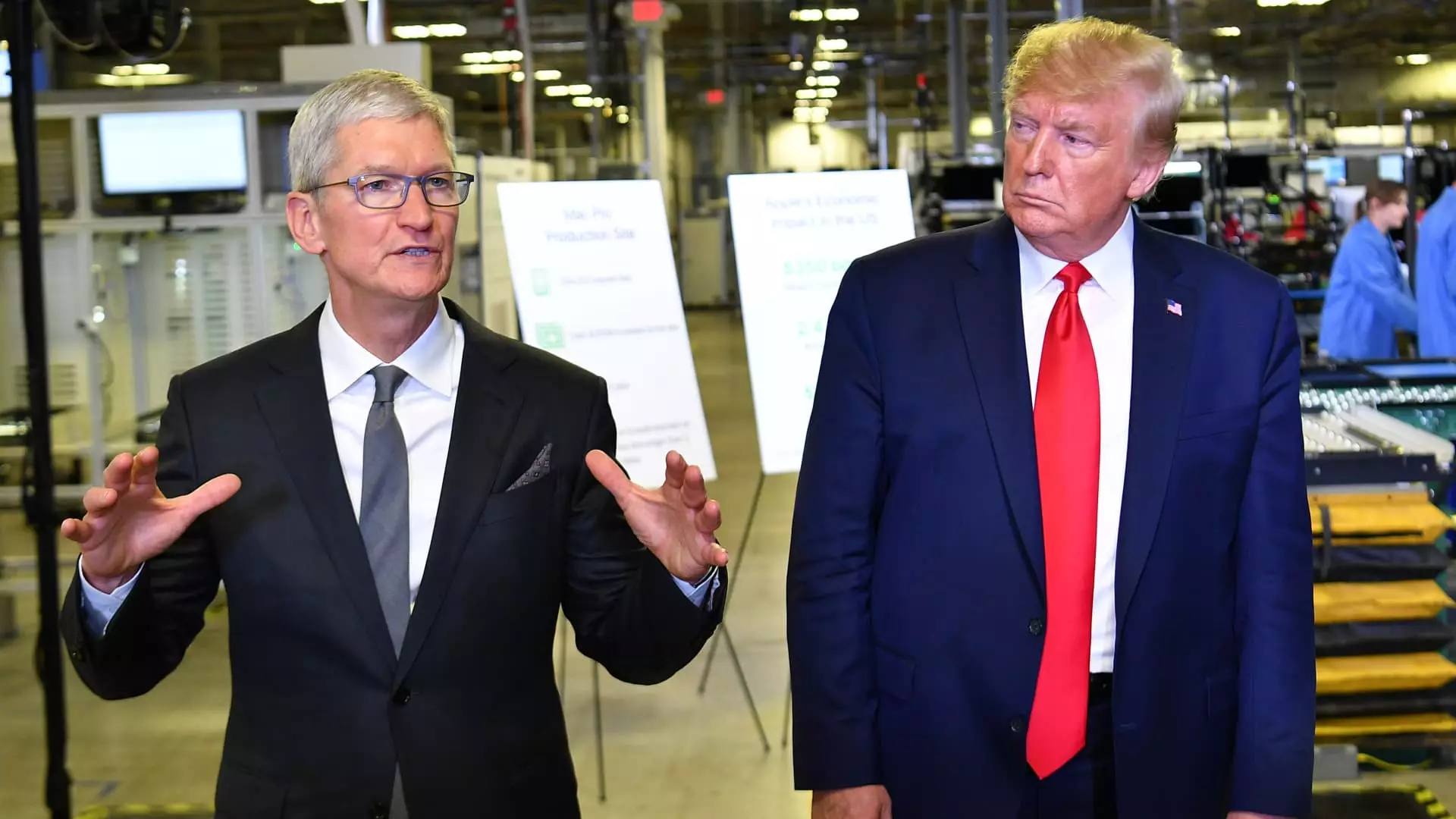In a recent social media declaration, former President Donald Trump issued a stark warning to Apple regarding its manufacturing practices. He insisted that if the tech giant wishes to sell its iPhones in the United States, they must produce them domestically, threatening a steep tariff of 25% or more for devices manufactured abroad. This bold statement underscores a pivotal intersection of politics and business that may reshape the future of tech manufacturing in America. As Apple grapples with the feasibility of relocating production away from its established bases in China and India, it finds itself at the mercy of political sentiment and economic strategy.
Trump’s remarks have already impacted Apple’s stock, causing shares to dip by nearly 3% in premarket trading. This reaction illustrates the market’s sensitivity to the underlying economic implications of such statements, particularly from a figure who has been notoriously vocal about the U.S.’s trade relations. The notion of moving production to the U.S. is a complex one, as analysts anticipate that such a shift would likely lead to a price increase for consumers, with estimates for a domestically-manufactured iPhone soaring to as much as $3,500 — a staggering jump from the current average retail price of around $1,000.
Domestic Production vs. Global Reality
The call for increased domestic production isn’t merely an arbitrary mandate; it’s emblematic of a larger debate surrounding American manufacturing. Tim Cook, CEO of Apple, has engaged in conversations with Trump about these issues, indicating a recognition of the importance of maintaining a solid relationship with the Administration. However, this cooperation puts Cook in a tight spot. While Apple has pledged substantial investments in U.S. development — including ambitious commitments amounting to $500 billion — the practicalities of large-scale manufacturing remain daunting.
Apple’s current production strategy leans heavily on partnerships in China, facilitated by companies like Foxconn. The massive Taiwanese firm has recently announced plans to invest $1.5 billion to expand its manufacturing capabilities in India, further highlighting Apple’s strategy of diversifying its manufacturing base. However, transitioning U.S. production not only poses logistical challenges but risks alienating the company’s existing infrastructure and cost-effectiveness.
The Broader Economic Landscape and Trade Implications
Trump’s rhetoric towards Apple is part of a broader pattern that has seen rising tensions between the U.S. and its trading partners. As he also called for a substantial tariff on products from the European Union, it raises questions about the long-term sustainability of trade agreements and the potential retaliatory measures that could follow. The specter of a trade war looms large, especially in light of the fragile relationship that exists between the U.S. and China.
Amid these political machinations, Apple finds itself with challenges on multiple fronts. The company has already forecasted an additional $900 million in costs related to tariffs for the current quarter, reflecting the immediate pressure these imposed levies create. Cook himself articulated a sentiment of unpredictability regarding future tariffs, leaving stakeholders uncertain about the financial implications moving forward.
Consumer Demand in a Shifting Market
Simultaneously, Apple is facing dwindling demand in critical markets like China. In response, the tech giant has implemented incentives to bolster iPhone sales, including enhanced trade-in offers. This dual challenge of managing production costs while stimulating demand simultaneously highlights the precarious position in which Apple operates. The market dynamics are shifting, and without a strategic pivot, the company risks not only economic upheaval but also a potential shift in brand loyalty among consumers.
Trump’s recent post also calls to mind the critical conversations surrounding the American tech industry and consumer expectations for domestic production. As consumers become more vocal about their preferences for domestic goods, companies like Apple may feel compelled to align their practices with these sentiments. However, the financial realities cannot be ignored, and the anticipated costs associated with domestic production are daunting.
Apple’s ongoing negotiations with these geopolitical factors underline a critical period for the corporation, reflective of the broader challenges facing the tech industry. As the landscape evolves, the intersection of consumer preferences, political pressures, and global supply chains will play an essential role in determining the future of tech manufacturing in the United States.

